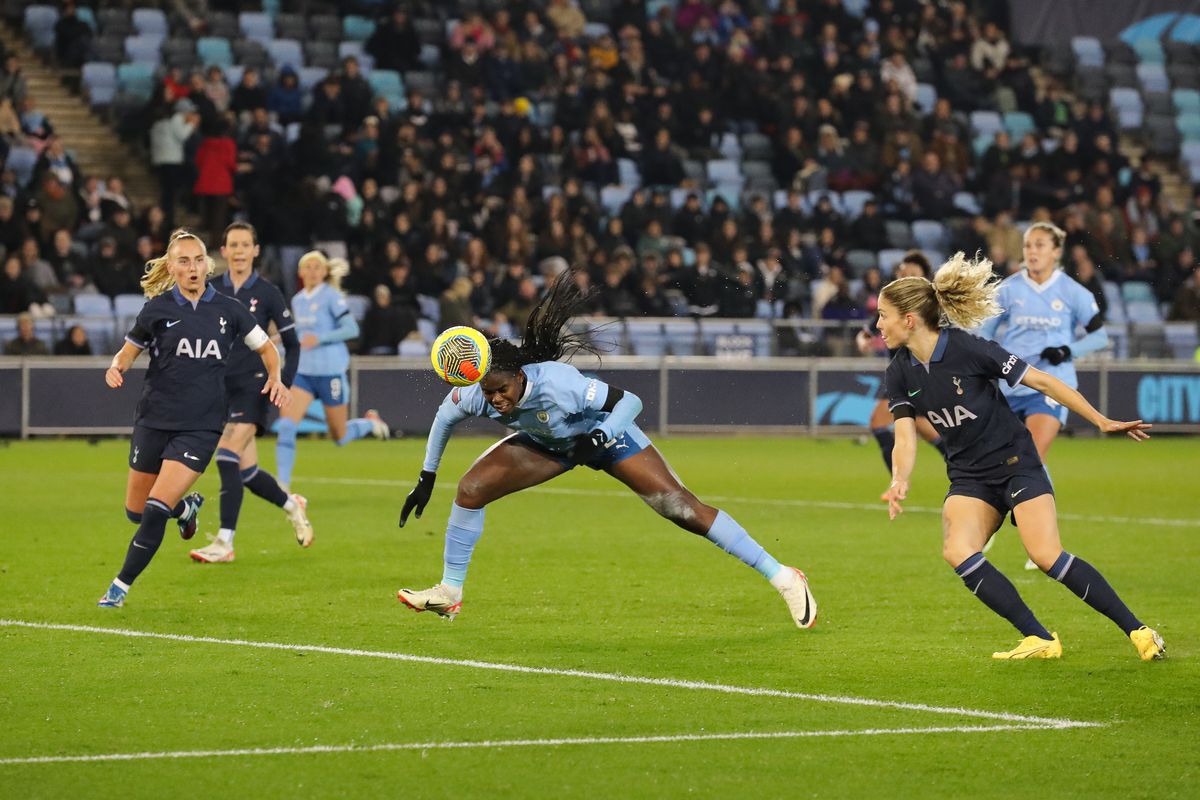© The Fan Experience Company 2023

The major disparity between the WSL and Premier League
[The] restructure will hopefully stop the WSL from having a handful of rich clubs. A league dominated by four teams is not going to be appealing to broadcasters and will not be commercially attractive. For the league to become more financially independent, it needs to have value.
Over recent years, the English Women’s Super League (WSL) has experienced enormous progress and growth. The league’s chairman, Dawn Airey, recently suggested that those in charge of the WSL plan on making it the first billion-pound women’s soccer league in the world.
It will not be a quick process, but the league is hopeful of reaching these exciting heights within the next decade.
The growth in women’s soccer in the UK has been evident, especially since England were crowned European Champions in 2022. Before the UEFA Women’s Euro, the average WSL attendance was 1,850. After England’s triumph, this increased by 25% to 6,204.
This attendance uplift is ongoing, with Arsenal setting a new WSL attendance record at the start of the 2023 season, with 54,115 fans in attendance at the Emirates Stadium to watch their opening-day defeat to Liverpool. These are very promising signs for women’s soccer.
In comparison to the other women’s leagues around the world, the WSL dominates, certainly in Europe. A total of 94 WSL players appeared in the 2023 FIFA Women’s World Cup, 31 more than the US National Women’s Soccer League.
The top women’s soccer stars play for WSL teams, including Sam Kerr, Mary Earps, Vivianne Miedema, and Alessia Russo. The WSL also has a much greater social media following than any of the other women’s leagues in Germany, Spain, Italy, and France combined.
The BBC and Sky’s broadcast deal with the WSL has allowed women’s soccer in England to take a major step forward. That contract, which was agreed ahead of the 2021-22 season, expires at the end of this campaign. The BBC agreement specifically was a historic deal, airing women’s soccer on free-to-air (FTA) television, creating greater accessibility for a wider audience.
TNT Sports is rumored to be preparing a bid to compete with BBC and Sky for live rights to the WSL for next season. It is not clear whether the BBC will retain any broadcasting rights, thus taking away the element of showing live women’s soccer on FTA TV.
However, a positive out of this potential deal would be the significant investment for women’s soccer in England that TNT would bring. It would be a shame if the BBC did not keep its rights beyond this season, however, the financial benefit that TNT would provide the league would be very beneficial.
Financially, the WSL is still very much dependent on the men’s teams, with most sponsorship deals being bundled with both sides, and only a small portion of the deals being women’s only partners.
Not only does this show the reluctance of brands to solely sponsor the women’s teams, but also how the WSL teams are still a long way off where the men’s teams are in terms of their financial revenue.
A prime example is that none of the women’s teams have their own kit supplier, front-of-shirt sponsor, or sleeve deal. The women’s teams are solely reliant on the men’s sides in this aspect.
Sponsorship interest is gradually growing year-on-year, with more brands investing in the women’s teams. Nevertheless, there are still very few in comparison with the men’s teams’ deals. The WSL is also at risk of the top clubs (Chelsea, Manchester United, Manchester City, and Arsenal) being strides ahead of the other women’s teams.
For example, Manchester United Women dominate the sponsorship revenue market, with all their deals primarily agreed with the men. Hopefully, this will gradually change over time and the WSL team’s financial revenue will not be dictated by the success of the men’s teams.
The WSL is at a major crossroads. As of the 2023-24 season, the WSL and Championship are wholly owned by the FA. Yet, it is expected that the 2024-25 season will see new owners. NewCo is expected to take over the running of both the WSL and the Championship next season, which will result in a restructure of power in a move like the Premier League’s 20-club governance model.
This restructure will hopefully stop the WSL from having a handful of rich clubs. A league dominated by four teams is not going to be appealing to broadcasters and will not be commercially attractive. For the league to become more financially independent, it needs to have value.
Obviously, it is unknown what effect this restructure will have on the WSL, however, it will be interesting to see whether this helps boost the financial revenue that the women’s clubs receive, and possibly bridge the gap by limiting the league from having a few very rich clubs and the others being left behind.
There are three economic pillars whereby soccer leagues and their clubs generate turnover – broadcast rights, ticket sales, and other commercial deals such as sponsorships.
These pillars are responsible for pushing the value of the game, hence why there is such a major gap between men’s and women’s soccer in England. Ticket prices are lower for the WSL and there is less demand for tickets. This is also reflected in the wage imbalance between the men’s and women’s games.
Even though there is still a major disparity between men’s and women’s soccer, especially financially, the WSL has made huge strides in recent years. There are signs of progress in the three economic pillars, most notably in international competitions.
The 2022 European Championships saw sponsorship deals unbundled and sold separately for a women’s competition for the first time.
If the women’s game continues this positive momentum and progress, it will firstly help narrow the gap between the men’s and women’s games, but also filter through from the international level to the domestic competition.
There is plenty of work still to be done to close the gap between the WSL and the Premier League. However, with the restructuring of the league, the growth in popularity, ticket sales, broadcasters, and sponsorship revenue, the WSL has light at the end of the tunnel, and it is exciting to see what women’s soccer can achieve in the future, especially in the next 10 years.
Original article published 23.11.2023 on the Sportcal website.
To view the full article, click here
